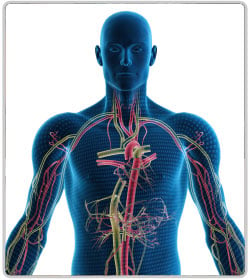- Cytokines and Their Side Effects - (https://www.cancer.org/treatment/treatments-and-side-effects/treatment-types/immunotherapy/cytokines.html)
- What Are White Blood Cells? - (https://www.urmc.rochester.edu/encyclopedia/content.aspx?ContentID=35&ContentTypeID=160)
- Properties of Cytokines - (http://www.sbs.utexas.edu/sanders/Bio347/Lectures/2006/Lecture%2014%202006.htm)
- Chemokines: Introduction - (https://www.immunology.org/public-information/bitesized-immunology/receptors-and-molecules/chemokines-introduction)
- Cytokine Storm - (https://www.cancer.gov/publications/dictionaries/cancer-terms/def/cytokine-stormhttps://www.cancer.gov/publications/dictionaries/cancer-terms/def/cytokine-storm)
- What is a cytokine storm? - (https://knowablemagazine.org/article/health-disease/2020/what-cytokine-storm)
- Cytokines and Their Side Effects - (https://www.cancer.org/treatment/treatments-and-side-effects/treatment-types/immunotherapy/cytokines.html)
- Cytokines as Therapy - (https://ccr.cancer.gov/news/landmarks/article/cytokines-as-therapy)
- Ragab D, Salah Eldin H, Taeimah M, Khattab R, Salem R. The COVID-19 Cytokine Storm; What We Know So Far. Front Immunol. 2020 Jun 16;11:1446. doi: - (10.3389/fimmu.2020.01446. PMID: 32612617; PMCID: PMC7308649)
- Turner MD, Nedjai B, Hurst T, Pennington DJ. Cytokines and chemokines: At the crossroads of cell signalling and inflammatory disease. BiochimBiophys Acta. 2014 Nov;1843(11):2563-2582. doi: - (10.1016/j.bbamcr.2014.05.014. Epub 2014 Jun 2. PMID: 24892271)
- Robert R. Rich, Thomas A. Fleisher, William T. Shearer, Harry W.Schroeder Jr., Anthony J. Frew, and Cornelia M. Weyand. Clinical immunology-Principles and practices. 3rd edition. Maryland Heights, Missouri: Mosby Elsevier; 2008. Chapter 10, Cytokines and cytokine receptors; p.139-171
- Chapel, H., &Haeney, M. Essentials of clinical immunology. 6th edition. Oxford: Blackwell Scientific Publications;2014. Chapter 1, Basic components: Structure and function; p.2-33
- Judy Owen, Jenni Punt, Sharon Stranford. Immunology. 7th edition. New York: W.H. Freeman & Company;2013. Chapter 4, Receptors and signaling: Cytokines and chemokines; p.105-110
What are Cytokines?
Our immune system consists of many different kinds of protective cells that play a role to fight the infections and diseases. Of these, some cells produce signaling molecules that allow cells all over our body to communicate among themselves. One such group of signaling molecules that mediates cell to cell communication is called cytokines.
Many immune cells such as macrophages, monocytes, and lymphocytes can produce cytokines. Most of these cytokines are soluble proteins.
How do Cytokines work?
During an encounter with disease-causing agents or cancer cells, our immune cells secrete and send off cytokines. These mediators alert other groups of immune cells that are traveling in the nearby minute blood vessels called capillaries, thereby making them ready to fight against the infection from the microbes or from the invading tumor cells.
This encounter triggers an immune response in the body that results in the clearance of any of these harmful agent. In this way, cytokines mediate cell-to-cell communication throughout the human body and render an appropriate defensive action.
Cytokines are further referred to as “Immunomodulating agents”. There are two kinds of cytokines called pro-inflammatory and anti-inflammatory cytokines.
- The pro-inflammatory cytokines organize the events related to cell-mediated immune response. They also participate in the growth-regulating events, cell differentiation, and navigate immune cells to the appropriate sites of infection.
- The anti-inflammatory cytokines control and soothe the responses created by pro-inflammatory cytokines and promote healing.
What is so Special about Cytokines?
Cytokines have six important characteristics:
- Cytokines bind with specific membrane receptors and carry out some work on target cells.Receptors refer to the molecular structures on the cell surfaces that selectively receive and bind specific chemical molecules. Target cells refer to the cells that undergo specific changes due to the action of the chemical molecule it acquired through its receptor.
- Cytokines are produced in a cascade as one kind of cytokine might trigger a cell to produce another type of cytokine. It is also possible for different types of cells to produce a specific sort of cytokine.
- A single type of cytokine can act on many different kinds of cells.
- They perform numerous biological functions.
- They can generate and support the activation of specific T-cell (a type of immune white blood cells called T-lymphocytes) groups.
- Some combinations of cytokines can act together, whereas some can also work against each other.
- Cytokines show endocrine, paracrine, and autocrine activities
- Endocrine – Some cytokines can pass through the bloodstream and act on cells some distance away from the site of production
- Paracrine – Some cytokines act on the cells that are present near the site of production
- Autocrine – Some other cytokines act on the same cell that produces them.
What are the Types of Cytokines, and what do they do Specifically?
Many different cytokines are produced by our immune cells. Yet there are six major cytokine super-families:
- Chemokines
- Colony-stimulating factors
- Interferons
- Interleukins
- Transforming-growth factor (TGF-Beta)
- Tumor necrosis factors (TNF)

Chemokines
Chemokines induce the migration of cells through their chemical nature. Cells that receive chemokines through their receptors tend to move towards the site of chemokine secretion, where it is found in higher quantities. Chemokines attract cells in this way for multiple reasons as follows:
- To generate an immune response and promote healing the process as some chemokines are produced after infections and physical damages like wounds
- To recruit some white blood cells to lymph nodes to screen for disease-causing microbes promptly
- To promote the formation of new blood vessels
Colony Stimulating Factor (CSF)
Colony-stimulating factors trigger the transformation of stem cells in the bone marrow and result in the growth and production of different kinds of blood cells. They also manage the levels of blood cell production based on the requirements of our bodies.
Interferons (IF)
Interferons are concerned indirectly with antiviral activities. They are released in response to the genetic material or viral particles inside our bodies. Although interferons cannot block the entry of viruses, it is possible for them to arrest their multiplication by triggering some proteins that can damage viruses.
Other than the antiviral activity, they also activate and amplify the functions of macrophages, neutrophils, and monocytes. Interferons also possess activity against tumors. There are three different classes of Interferons, all concerned with any of these activities called IF-alpha, IF-beta, and IF-gamma.
Interleukins
The human genome encodes more than fifty interleukins and related proteins. In general, all the interleukins regulate cell growth and antibody generation. Some functions of specific cytokines are as follows:
- IL-1 - Induces the generation of T and B lymphocytes and assigns them specific characteristics
- IL-2 - Gives T- lymphocytes the ability to destruct infected cells and promote the secretion of other cytokines
- IL-4 - Stimulate specific antibody production (IgA and IgM) and helps in the development of eosinophils
- IL-6 - Equips T-lymphocytes with specific properties and increase Immunoglobulin-G production
- IL-12 - Activates Natural killer cells that are involved in the antiviral and anti-tumor activities
Transforming growth factor-beta (TGF-beta)
Transforming growth factor-beta modifies fibroblasts into other kinds of connective tissues. Besides this, it can also promote wound healing and controls some immunological processes.
Tumor necrosis factor (TNF)
Tumor necrosis factor (TNF) occurs in two types, TNF-alpha and TNF-beta. TNF-alpha is involved in most anti-tumor, antiviral, and anti-parasitic activities whereas TNF-beta is mainly concerned with stimulating other cytokines.
|
Cytokines Types |
Essential Function |
|
Chemokines |
Healing, formation of new vessels & induct white cells |
|
Colony-stimulating factors |
Transformation of stem cells into blood cells, Regulation of blood cell production |
|
Interferons |
Anti-viral and anti-tumor activities, Amplification of the functions of immune cells such as macrophages, neutrophils, and monocytes. |
|
Interleukins |
Generation of T and B-lymphocytes, Induction of antibody production, Activation of Natural Killer cells against tumors |
|
Transforming-growth factor (TGF-Beta) |
Modification of fibroblasts into other kinds of connective tissues, Wound healing |
|
Tumor necrosis factors (TNF) |
Anti-tumor, antiviral, anti-parasitic activities and stimulating other cytokines |
Table1. Describing Types of Cytokines and their Function
Why and When Does Cytokines become Dangerous to us?
Cytokines are beneficial when they work for us by fighting against infections, but once their production gets out of control, that's when they become harmful. This severe immune reaction where the body releases too many cytokines into the blood too quickly is called a cytokine storm. It is this particular reaction that makes many people die from the recent COVID-19 pandemic.

So, how does this happen?
As the normal disease-fighting activities of our body require inflammatory pathways, cytokines come into play as they have an essential role in inducing inflammations. The primary cytokines involved in this process are IL-1, TNF- α, and IL-6.
When these cytokines are produced abundantly, the immune system finds it too challenging to switch off their production. As a result, the flooding cytokines start to attack healthy tissues and enter blood vessels. They then exhaust red and white blood cells, damage the liver, and make the blood vessels leak fluid into the lung space causing it swelling and stopping the exchange of oxygen resulting in dropping of oxygen saturation.
Ultimately, the internal organs get deprived of blood due to the blood clots throughout the body, making the person develop severe organ damage or death.
Along with the three cytokines mentioned above, interferons are also found to be associated with cytokine storms.
Is this what happens to COVID patients?
The destructive cytokine effects imposed on the lungs can progress into acute lung injury or a more severe disease called Acute Respiratory Distress Syndrome (ARDS). This condition can result in low oxygen saturation levels and creates severe breathing issues that can make a person difficult to breathe without ventilator support.
Although the complete mechanism behind this condition is not fully understood, cytokine storm is considered to be one of the major contributing factors in the development of ARDS.









